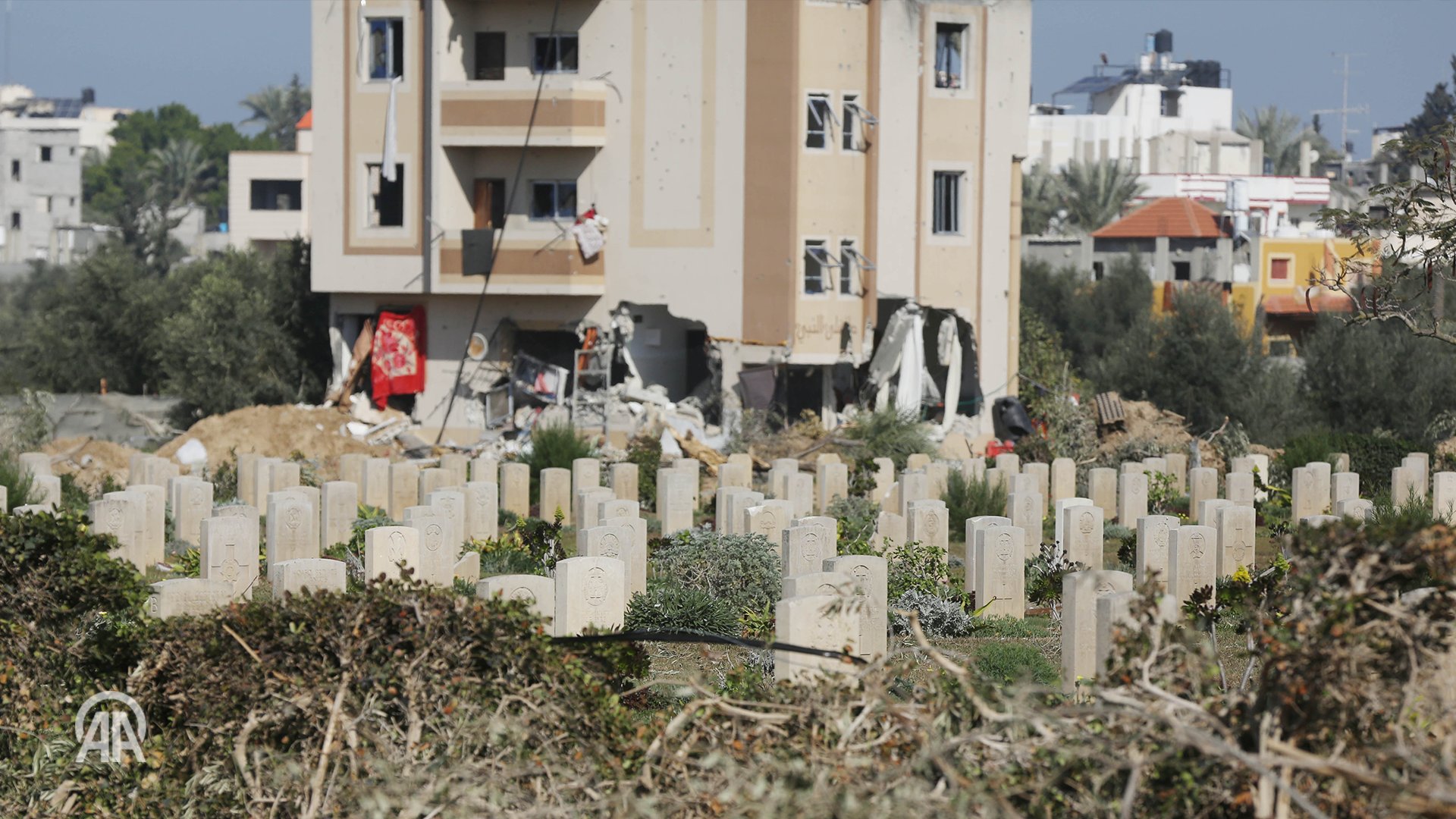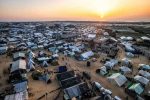GAZA, (PIC)
Random graves have been spreading in several locations in the Gaza Strip, with the intensification of the bloody Israeli bombardment, the besieging of hospitals, and the direct targeting of displaced people and their shelters.
Palestinians have expressed their fears of the spread of epidemics in residential areas and accommodation centers in the northern Gaza Strip, as citizens now find themselves living next to random graves where their relatives who were martyred in Israeli attacks are buried, along with a large number of missing persons under the rubble.
Palestinians in all governorates of the Gaza Strip have resorted to the establishment of random mass and individual graves in residential neighborhoods, house backyards, roads, wedding halls, sports stadiums, and hospitals, due to the Israeli occupation’s siege of the areas it infiltrates and the closure of roads leading to the main and organized cemeteries.
The targeting by the occupation, as well as the excavation and desecration of Palestinian cemeteries, has reached several areas, including a cemetery in the Austrian neighborhood west of Khan Younis.
The Euro-Mediterranean Human Rights Monitor has documented the establishment of over 120 random mass graves in the Gaza Strip to bury the war martyrs.
Burial of bodies
Raed Daifullah, a displaced Gazan, said that the construction of individual and mass random graves for the burial of martyrs has become a prevailing practice in the governorates of Gaza and the north.
He added in his statement to Anadolu Agency, “Burying the bodies of martyrs in residential neighborhoods, accommodation centers, and public streets is due to the difficulty of burying them in cemeteries.”
He explained that citizens are afraid to go to cemeteries to bury their martyrs for fear of being targeted by the Israeli occupation forces.
He continued, “Today, we cannot bury the dead in cemeteries because they are surrounded by shelling and destruction, in addition to the army’s excavation of graves and remains of the deceased. The situation here is harsh.”
He denied the existence of any safe place or area in Gaza and the north, saying, “Everyone is targeted here, whether children, women, or the elderly.”
He described life among the graves as a great tragedy and expressed hope for a ceasefire, the reconstruction of destroyed homes, and a swift return to them.
On the other hand, Soha Naseer, 36 years old, sitting next to her father’s grave in the Yemen hospital in Jabalia town, north of the Strip, said, “My father was sitting in the school -shelter center- when an Israeli missile fell on him killing him instantly.”
Burial Inside the hospital
She added while crying, “My father fled from Beit Hanoun town, to the north, to the shelter center, and they chased him to the safe place and killed him there.”
She explained that her family could not find a place to bury him except inside the hospital due to the difficulty of reaching cemeteries because of the repeated targeting of civilians.
Regarding the nature of life in the north, Naseer said, “There is no form of life, especially with the lack of any food, drink, warm or safe place.” She added, “We are also dead, but we try to console ourselves to survive.”
In the Yemen hospital, displaced people expressed their fear of the spread of epidemics in the area due to the random and unregulated burial of martyrs.
They told Anadolu Agency that the health and living conditions are extremely poor, and there are concerns about further deterioration when the buried bodies decompose. They explained that foul odors emanate from the area, given the scarcity of water needed for cleaning, in addition to the lack of personal hygiene supplies.
The possibility of the spread of these epidemics increases with the presence of missing bodies under the rubble of destroyed homes.
Moreover, the likelihood of diseases and their spread increases due to the lack of proper nutrition, causing weakened immunity among residents in Gaza City and the north.
The World Health Organization and UN institutions have repeatedly warned of the possibility of epidemics spreading in various areas of the Strip due to the ongoing Israeli war and the restriction of humanitarian aid and health supplies.
The United Nations Relief and Works Agency for Palestine Refugees (UNRWA) previously warned that gastrointestinal diseases in Gaza have spread at a rate four times higher than before, and skin diseases have tripled.
The UN agency confirmed reports of the spread of viral hepatitis in the Strip, along with the emergence of other epidemics such as cholera.













